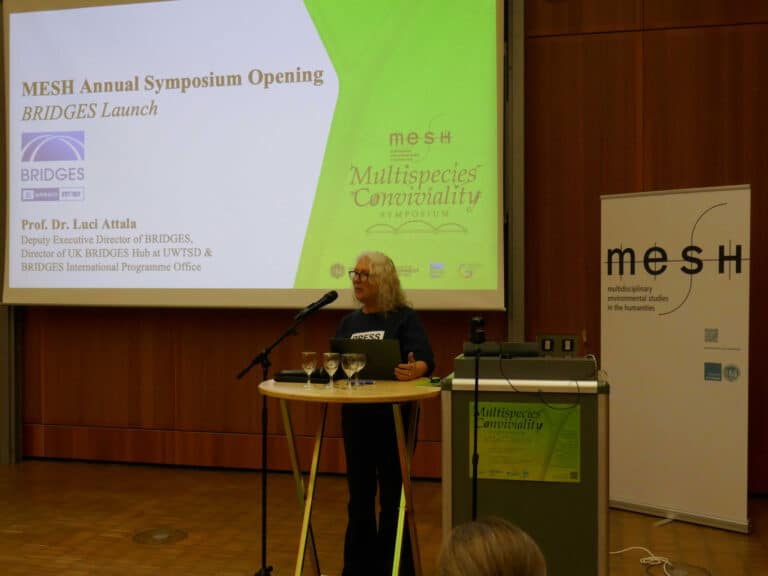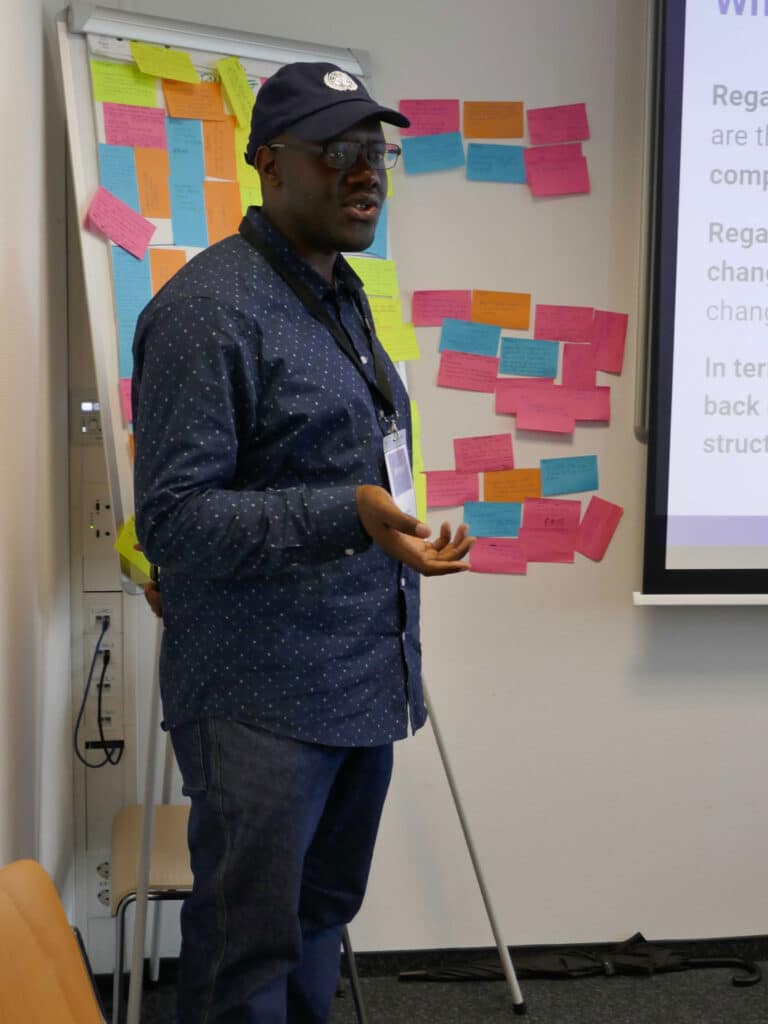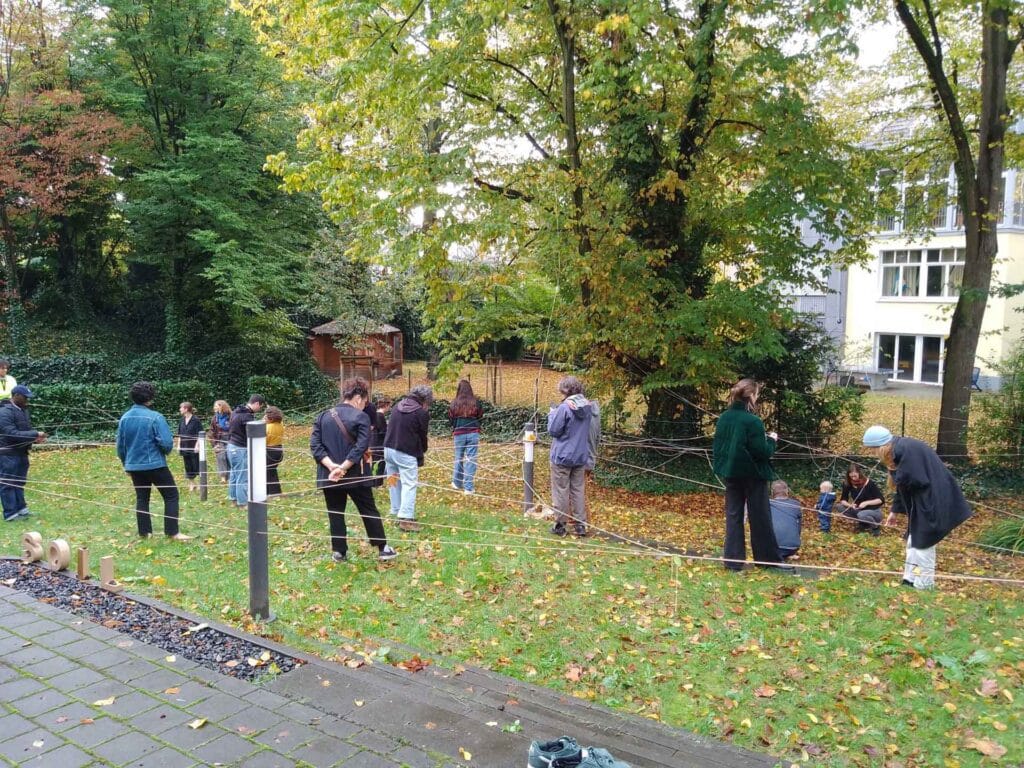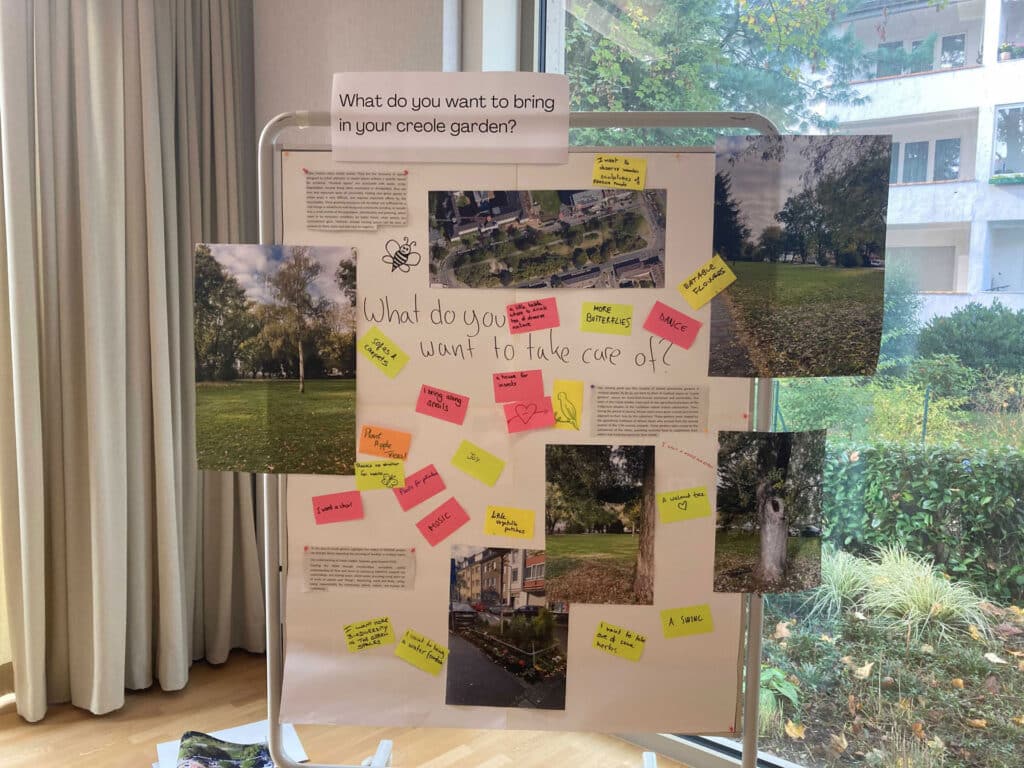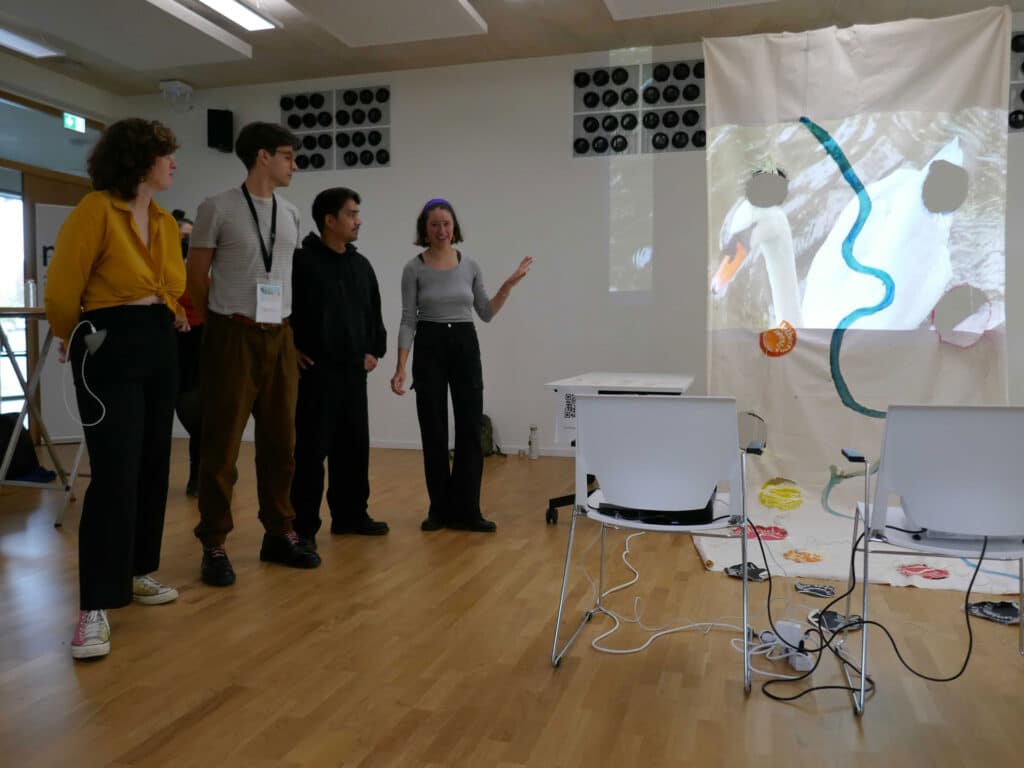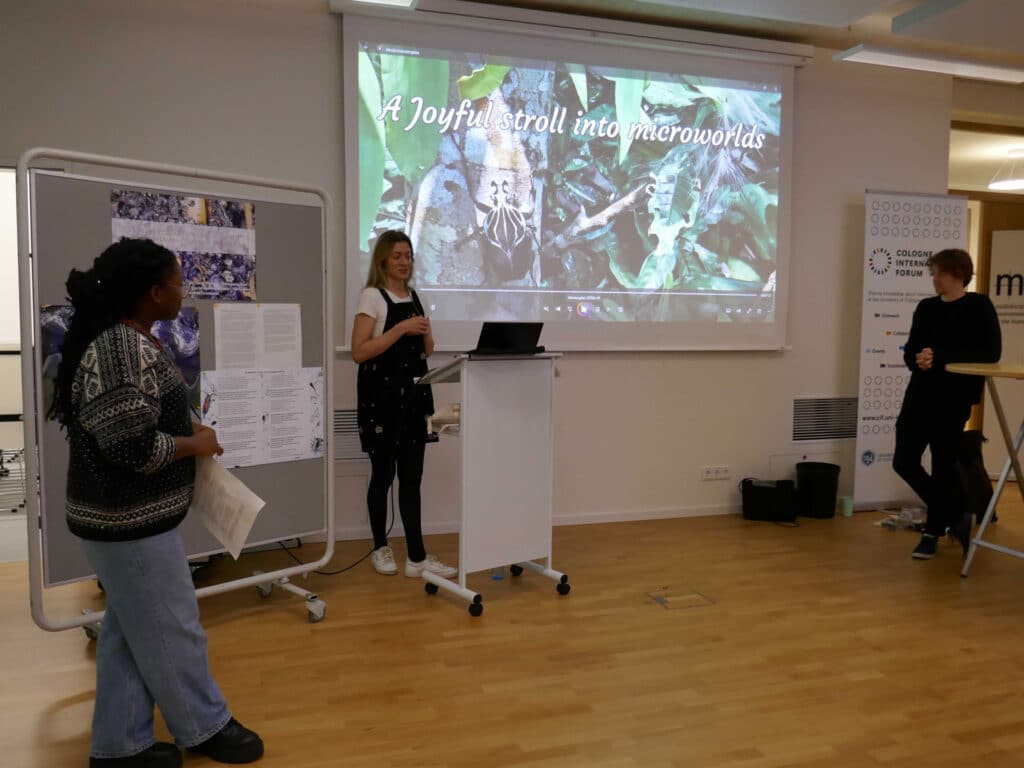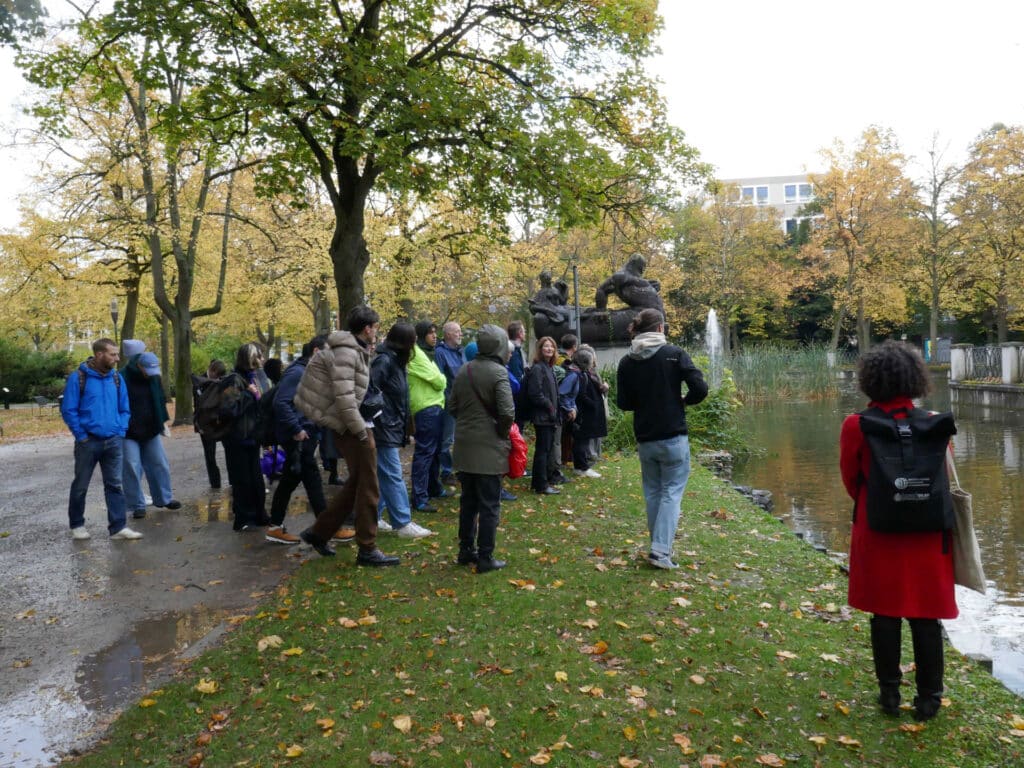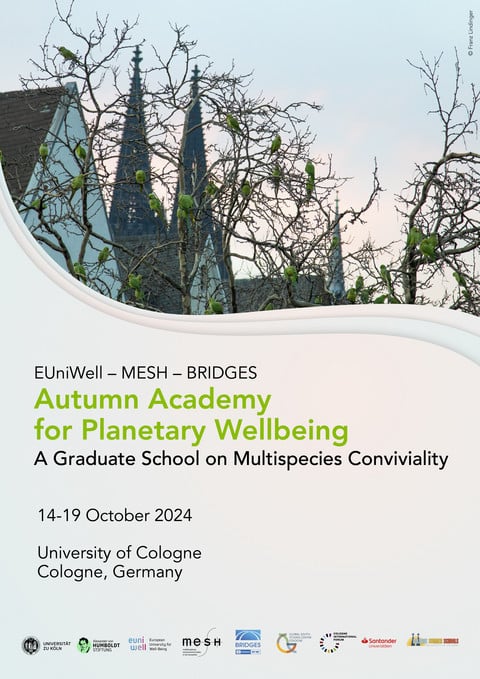Last month, from 14-19 October 2024, we successfully organized the “Autumn Academy for Planetary Wellbeing: A Graduate School on Multispecies Conviviality” at the University of Cologne (UoC). This stimulating academic gathering involved staff and students (Masters and PhD level) from the EUniWell network, including University of Cologne (Germany), University of Nantes (France), Linnaeus University (Sweden), and University of Florence (Italy). There was also a host of guest speakers from all over the world who took part in the MESH Annual Symposium on Multispecies Conviviality, which was embedded in the graduate school.
For the Academy and Symposium, which included the launch of the UoC Thematic Hub for Planetary Wellbeing within the UNESCO-MOST BRIDGES Coalition, the menu was rich and varied. In addition to keynotes, other items on the agenda included practical and foresight workshops, lectures, group work, excursions, multispecies exhibitions and storytelling, among others. This gathering suggested that conviviality is enmeshed not only in co-evolution, co-dependence (ubuntu), co-creation and co-production, but also in co-mobility, whether intellectual, physical, or spiritual. And the Academy and Symposium were very mobile!
Accordingly, we journeyed discursively and physically into many realms such as countries, continents, estuaries, spirits, forests, mining sites, museums, reserves, gardens, farms, houses, villages, ponds… On these journeys, we encountered and shared spaces with a wide number of beings: crops, weeds, parrots, fungi, bats, elephants, monkeys, snails, frogs, viruses…and so on. And talking about viruses, it is worth noting that some left us with autumnal infections!
Another major highlight of this graduate school was that it culminated in the display of a series of excellent interactive, multimedia and placed-based projects designed by the participants under professorial mentorship. The participatory projects, which were showcased in a Multispecies Storytelling Exhibition on Saturday 19 October 2024, are summarised below.
One of these projects, entitled “From Soil to Soil”, highlighted the interconnectedness within and between species as they pass through the material and spiritual realms. This embodied experience was aimed at unveiling the hidden relations and dependencies we/humans may overlook or disregard in plural ecologies. Participants were invited to walk around the venue’s leafy garden barefoot, and, using the twine provided, they were encouraged to make visible any connections they were moved to create, tie, re-knot, weave, or simply observe and pay attention to their breath. By participating in this collective creation, each person contributed to an evolving work of art that revealed complex and delicate interconnections while also trying to carefully balance their own act of moving through these networks. This art practice thus encouraged a mindful presence, asking each participant to pause and feel the soil underfoot, to breathe deeply, and recite, “from soil, to soil,” thereby bringing awareness to cycles of life connecting all beings.
Another group project was entitled “Creole Gardens” and it sought to imagine how to make the best use of empty urban spaces. Cities contain many empty spaces—remnants of urban planning or areas without specific purposes—often seen as waste or degraded. Yet, these “residual spaces” have the potential to foster community and conviviality. This project began by reimagining these spaces as shared community gardens, inspired by “creole gardens”—places of more-than-human interaction. The roots of the Creole Garden trace back to the small-scale agricultural practices of Indigenous Caribbeans and African slaves, who cultivated these spaces for food and medicine, ensuring their survival.
The group expanded the notion of “feeding” to multiple layers, emphasizing shared food among humans and highlighting a multispecies perspective. This included feeding the mind through cultural awareness, perception, and spatial understanding of flora and fauna, fostering empathy toward our surroundings and providing shared spaces for diverse species. It was about nourishing the mind and body, taking responsibility for community, planet, and non-human life. The ultimate goal was to invite people to imagine what they would like to do with these spaces, what they would care for. This participatory approach encouraged collective reflection and community involvement in reclaiming and transforming urban residual spaces.
“The Patchwork of Life (2024)” was an artwork created by another group of young researchers. It combined video material, fabric, colours, text and sewing materials. Relating to the concept of “Fabric of Life” – where all species on Earth form an interconnected fabric of life, as proposed by MESH Scientist-in-Residence and graduate school lecturer, Prof. Dr. Sandra Díaz —, the artwork raised questions about actions of care, destruction and renewal in a multispecies world. Holes in the fabric exemplified ongoing destructive processes and asked questions about what happens when species get ripped of the fabric by becoming extinct or entering an endangered status. Such species are becoming detached from the fabric of life. Additionally, a detailed document gave access for viewers to explore in more depth the species at stake. As a performative part of the project, the audience was invited to engage with actions of repairing, and restructuring, and to experience the limits of these efforts. They were expected to do so by trying to “sew species back to life”. The audio-visual recordings playing on the canvas were all taken during the workshop week and showcased multispecies interactions of a local geographical area. Time- and place-bound, the video material interplays with the fabric by projecting through the holes and spreading over the canvas’ sides. Meanwhile, the scenes expanded as well as got fragmented, thus exploring current patches of a more-than-human world.
The fourth project (not in any order) was entitled “A Joyful Stroll into Microworlds – Exploring What Remains Unnoticed” and it focused on joy as a powerful response to eco-anxiety. With joy as their guiding theme, the group was inspired by Jakob von Uexküll’s invitation to take a “stroll,” exploring often-overlooked ecosystems around us. Together, they collected soil samples from various locations in Cologne, uncovering vibrant, hidden life under a microscope. This joyful discovery, documented in a video and shown at the exhibition, revealed intricate microworlds that evoke both wonder and responsibility. However, they also encountered “dead soil,” where no life could be found, leading to feelings of sadness and a profound sense of responsibility toward our environment.
Additionally, a group member created a musical piece celebrating plankton’s crucial ecological role, representing another joyful stroll into underwater microworlds and urging us to “Be like plankton, protect the Earth!” Two poetic reflections concluded the group’s exhibition, exploring the layered emotions—joy, curiosity, and ethical consideration—that accompany the uncovering of unseen life. Through this project, they hoped to inspire others to find joy in the “little things that run the world,” calling for renewed attentiveness and fostering appreciation for ecosystems that sustain us in invisible yet vital ways.
These participatory student project presentations brought the gathering to an exciting interactive end on Saturday.
An initiative of the UoC’s research hub for Multidisciplinary Environmental Studies in the Humanities (MESH) in association with the UoC’s Thematic Hub for Planetary Wellbeing within the UNESCO-MOST BRIDGES Coalition and EUniWell – European University for Well-Being, the Autumn Academy was generously supported also by the Global South Studies Centre (GSSC) and the Cologne Summer Schools programme.

